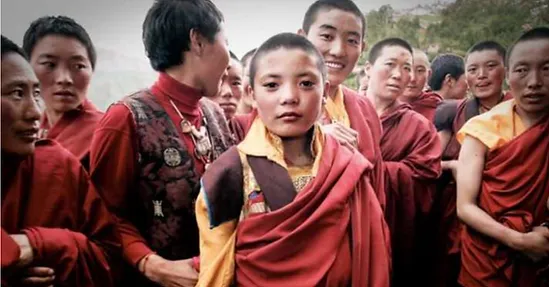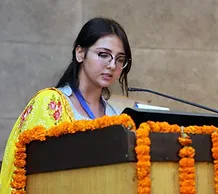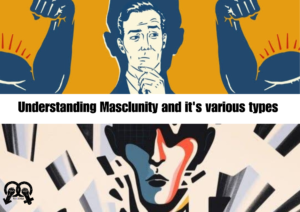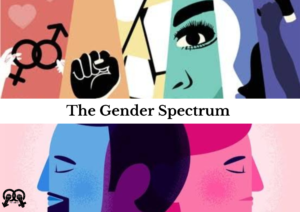She noted that some people saw her as a "sex symbol" rather than a serious practitioner of Buddhism and that this perception made it difficult for her to gain acceptance and respect within the Buddhist community
Outline

Breaking the Chains of Negative Metaphors: Women’s Struggle for Acceptance in Buddhist Monasticism
One of the challenges women have faced is the negative metaphors used in Buddhist households to discourage them from becoming nuns.
In her book “Innovative Buddhist Women: Swimming Against the Stream,” Karma Lekshe Tsomo discusses the negative attitudes and stereotypes that women who become nuns face, including the use of negative metaphors. She notes that these metaphors reinforce the idea that women who become nuns are somehow damaged or flawed and that they are making a mistake by pursuing a monastic path. She argues that these attitudes are rooted in patriarchal assumptions about gender roles and expectations and that they limit women’s ability to fully participate in Buddhist practice and contribute to Buddhist communities.[2]
The Perils of Beauty for Buddhist Women Monks on the Path to Enlightenment
Buddhist women monks face unique challenges on their path to enlightenment, including societal expectations related to their physical appearance.

One example of the challenges that Buddhist women monks face related to beauty is the case of Dhammananda Bhikkhuni, the first fully ordained female monk in Thailand. In an interview with The Guardian, she discussed the criticism she received from some members of the Buddhist community who believed that her beauty was a distraction from her spiritual practice. She noted that some people saw her as a “sex symbol” rather than a serious practitioner of Buddhism and that this perception made it difficult for her to gain acceptance and respect within the Buddhist community.[3]
Another example is Khandro Rinpoche, a female Tibetan Buddhist teacher who has faced criticism and scrutiny due to her physical appearance. In a 2017 interview with Lion’s Roar, Rinpoche discussed the challenges she has faced in being taken seriously as a spiritual leader, including criticism from those who view her as too attractive or too fashion-conscious. She noted that these criticisms reflect broader cultural biases against women and reinforce the idea that physical beauty is a hindrance to spiritual development[4]
Conclusion
In contemporary times, women have continued to struggle to gain equal access to the path of monasticism in Buddhism. In some countries, women are still prohibited from ordaining as full-fledged nuns and are relegated to inferior positions as novices or lay practitioners. For example, in Thailand, women are not recognised as Bhikkhunis, or fully ordained nuns, and are instead only permitted to become Samaneris, or female novices[5].
Similarly, in Sri Lanka, there are only a few female monastic centres, and women are not permitted to ordain as fully ordained nuns under the traditional Theravada ordination lineage.[6] Despite these challenges, many women have continued to push for equal access to monasticism in Buddhism.
One example is the founding of the International Association of Buddhist Women in 1987, which aims to support the development of women’s monasticism and provide opportunities for women to study and practise Buddhism[7].
Another example is the establishment of the Dhammadharini Monastery in California, which is one of the few monasteries in the United States that is exclusively for women and follows the Theravada ordination lineage.[8]
References
[1] Tsomo, K. L. (2001). Nuns’ education and training in Tibetan Buddhism. Journal of Buddhist Ethics, 8, 47-70.
[2] Branigan, T. (2015, August 11). Thailand’s female monks break through gender barriers. The Guardian. https://www.theguardian.com/world/2015/aug/11/thailands-female-monks-break-through-gender-barriers
[3] Lion’s Roar. (2017, March 27). Khandro Rinpoche on how to be a modern-day yogini. Lion’s Roar. https://www.lionsroar.com/khandro-rinpoche-on-how-to-be-a-modern-day-yogini/
[4] Jongjit, P. (2018). The challenge of women’s ordination in Thailand: A case study of Songdhammakalyani Monastery. Journal of Global Buddhism, 19, 29-40.
[5] Chuang, J. (2019). Women in Buddhist modernism. In K. L. K. Chan (Ed.), Routledge Handbook of Contemporary Buddhism (pp. 433-444).
[6]Tsomo, 2013
[7] Chuang (2019)
Drishti Kalra is an Assistant professor at DCAC College in the Department of History, at Delhi University. She is also a PhD Research scholar at the Department of History at Delhi University. She has also been employed as a Research Assistant on two projects at the Max Planck Institute in Germany and JNU. Currently. She has lately held positions with institutions such as The Telegraph, Médecins Sans Frontières, Intern, and Hindu Business Line.





